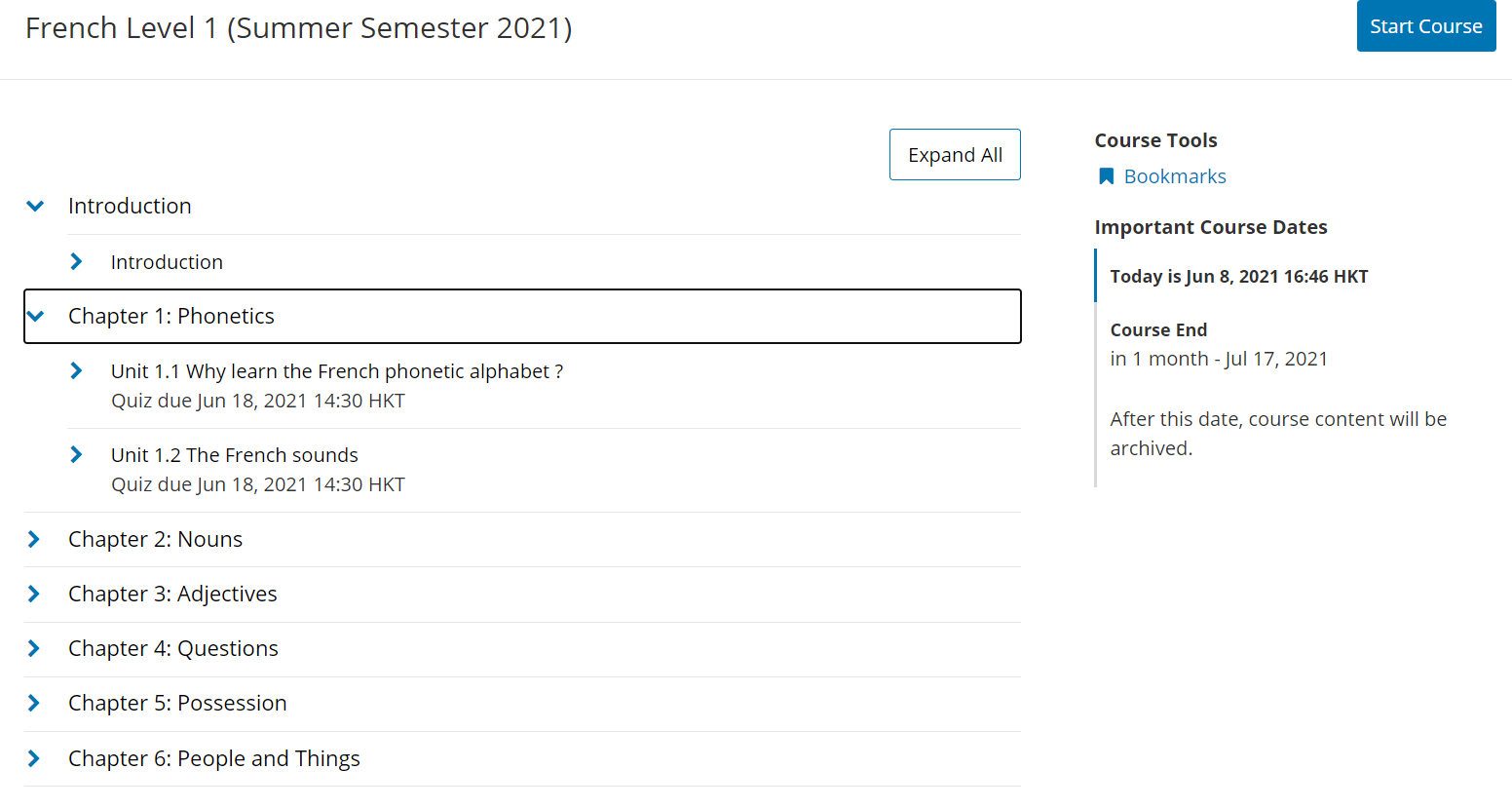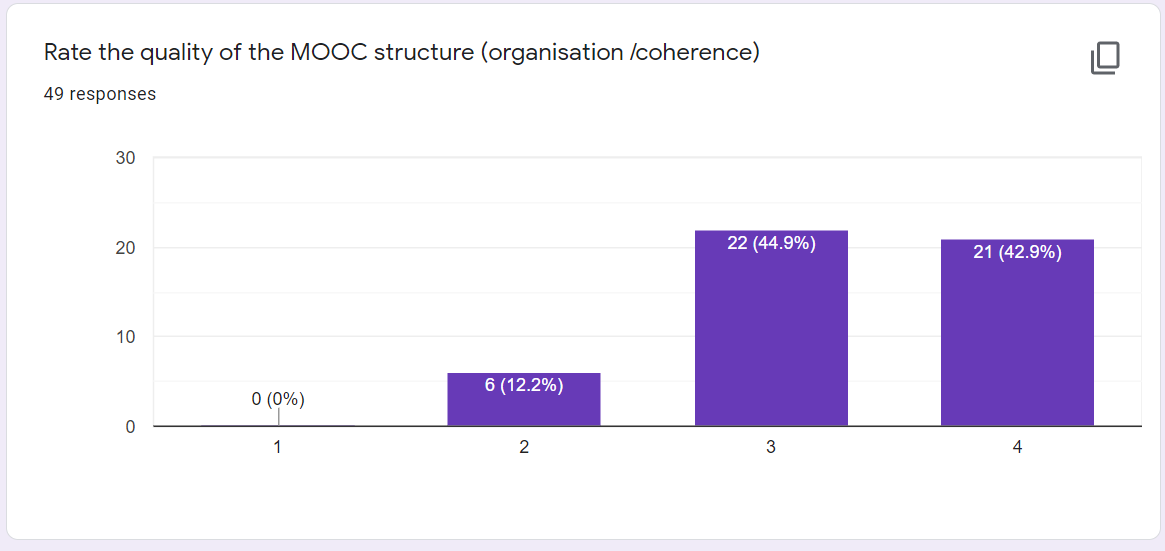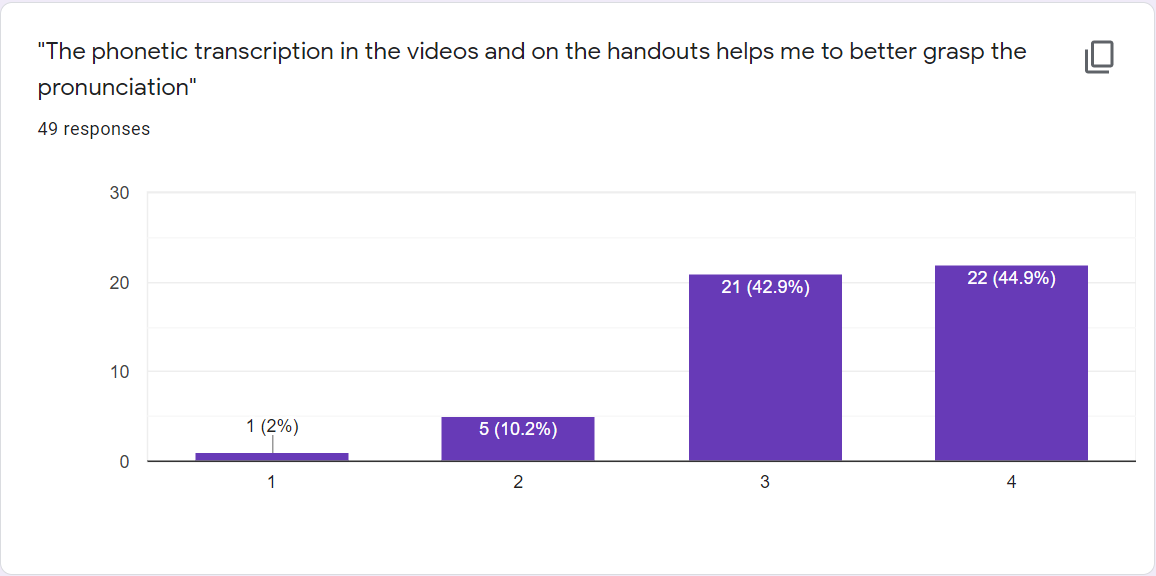Why make a mini-MOOC for the French Beginner’s course?
- To address learners’ need for explicit instruction in pronunciation and grammar
- To cater to the wide range of learning needs in a typical group of students
- To address the limited contact time and free up time for communicative practice
- To provide self-paced learning materials that can be revisited as per one’s needs
- To provide opportunities for asynchronous learner-instructor contact and conversation
- To introduce a selection of additional online learning tools, purposefully presented
At beginner’s level, the two main hurdles for the typical learner of French in Hong Kong are pronunciation and acquaintance with grammatical case.
The typical French Foreign Language learning method is the “action-oriented” or task-based approach: learning through exposure, contextualization and use. While this mostly “implicit” teaching approach does yield successful learning outcomes in the context of extensive face-to-face instruction, the need arises for a complement of explicit instruction in phonetics & phonology and basic grammar for beginning learners in a context where contact time is limited (39 hours to attain A1.1), the number of learners is high (as many as 30 learners in a group), learners’ pre-existing knowledge, learning skills and language skills differ greatly (French I is a free elective of the Faculty of Humanities open to students of all programs and years); even more so when a significant part of face-to-face instruction is technology-mediated, either synchronously or asynchronously, as it has been in recent times, due to the Covid-19 pandemic.
What’s in the French I mini-MOOC?
- French phonetics (contrast between the English and the French text-to-speech systems; French phonemes; basic features of connected speech);
- French grammatical case: the gender and number of nouns; determiner and adjective agreement;
- French syntax: the possessive case and possessive determiners; questions (word order and formality registers; yes/no and what questions); the third singular subject pronouns to refer to inanimate objects and to people.
How is the mini-MOOC structured?
6 chapters of 2 to 4 units each; completion time for each unit is around 30 minutes; completion time for the whole course is 9 hours; spread over 6 weeks in a typical 13-week semester.

Screen capture of the course’s main page on Open EdX (Summer 2021 edition)
Each unit begins with a subtitled mini-lecture in video format (9 minutes on average), with instructor’s talking-head and background PowerPoint slides, complemented with a PDF handout summarizing the content of the video, a graded quiz with two possible attempts, made of true/false, multiple-choice and open answer questions.

Screen capture of the elements of a unit (video, handout, quiz, discussion).

Screen capture of a subtitled mini-lecture in video format (chapter 2 unit 3).

Screen capture of an open answer (text) type quiz on the possessive case, using examples of folktales from French literature (chapter 5 unit 1).
- Additionally, some units end with an activity to be completed using selected online tools and/or a discussion forum to trigger meta-cognitive reflection and establish a community of inquiry among learners and between learners and instructors.

Screen capture of a discussion forum (chapter 1 unit 1) to collect and respond to the impressions of learners on using Naturalreaders.com to get a text-to-speech rendition of a French poem, and then listening to the French ITs rendition.
- Additionally, four units are complemented with a short skit written and performed by two native French speakers (the French International Tutors at EdUHK) in video format. The skits serve to exemplify and contextualize the language points covered in the unit while embedding them in a short story.

Screen capture of a skit by the French International Tutors Victor Montagné and Eva El Issaoui to illustrate the language covered in a unit.
Link to the video: https://youtu.be/VVwM5DyRVbs
How is the mini-MOOC integrated within the course?
First, it must be noted that the mini-MOOC can be completed as a stand-alone package, for students not registered in the French Level 1 course or anyone interested in the matter.
For students of the French level 1 course, the mini-MOOC is integrated within it using the flipped-classroom approach. Chapters are assigned progressively for students’ completion with a deadline before synchronous meetings, to ensure that students are acquainted with the concepts that will be mobilized in a task-based or communicative approach during the lessons. This aims at saving contact time in declarative-memory type tasks and use the time instead for procedural-memory type tasks.

Schedule of the French level 1 course showing the paced integration the mini-MOOC within the course in a flipped-classroom mode.
Although the neurolinguistics approach to foreign language learning (Netten and Germain) advises to proceed in a different sequence (i.e. procedural first, declarative second), I have noted an eagerness from the typical Hong Kong learner to understand the concepts first, and then to apply them in practical tasks and communicative activities, hence the flipped-classroom embedding of the mini-MOOC package in the course. This said, the mini-MOOC content also available for learner’s review after the lesson, should they feel this need.
Learner’s experience and feedback:
A survey was administered to collect information on learners’ views on their use of the French mini-MOOC and its perceived effectiveness in helping them reach the course intended outcomes. Two groups of 30 learners each were surveyed and 49 of them responded.
Regarding the level of user satisfaction:
On the whole, users are satisfied with the MOOC, even though a significant part of them deems the material quite difficult. 94% of users are quite satisfied or satisfied with the mini-MOOC. The best-rated feature is the quality of the content (51% find it good and 40% quite good). The structure and organization of the mini-MOOC is also well-rated, with only 12% of users having a negative opinion, and this despite the perceived level of difficulty of the material (34% of users find the content quite difficult, and 6% difficult).

(1: dissatisfied; 4: satisfied)

(1: poor; 4: good)

(1: poor; 4: good)

(1: difficult; 4: easy)
Regarding the usefulness of the components of each unit for learning:
The most useful element from the view point of users is the videos, followed by the handouts.

(1: not useful; 4: useful)

(1: not useful; 4: useful)
On the whole, only half of the respondents deems the quizzes useful for learning. This relatively low score may be due to the fact that, at the time of the survey, users only had one attempt for each quiz. Taking into account the results of this survey, two attempts per quiz are now allowed, to improve their formative purpose. Additionally, some questions were removed or simplified to account for users’ comments on the difficulty of some questions:
“Very clear and informative video contents, the quizzes challenge us which helps us understand the content more. But sometimes even though I have watched the video and read the handouts carefully, I still cannot find the answers to the questions so I had to go on to the internet for secondary sources.”
“The video is clear, some quiz questions are little tricky, which help me learn from my mistakes”
“More attempt chances for quiz, please”

(1: not useful; 4: useful)
The activities (reading a poem using automated text-to-speech websites; using the phonetic transcription and audio features of an online dictionary; translating words and phrases using an online dictionary with an awareness of grammatical case for accuracy; listening to a song and using Quizlet to make vocabulary lists), which are aimed at introducing methods and online tools to promote independent learning, their usefulness is somewhat relatively poorly rated, with 20% of users finding them not useful and 26% not quite useful.
On the other hand, a user suggests, “May provide more related resources, such as articles or interesting videos, etc.” while another notes, “Very nice. Encourage us to self-learn too.”

Upon asking students more qualitative feedback on this issue, some commented that they would benefit from closer guidance and individualized feedback upon completing the activities, in order to find them more useful. This points to the need for the instructor to bridge an existing gap between the teaching presence in the classroom and the teaching presence in the MOOC, an area of improvement to work on in future editions. One solution would be to feedback on the mini-MOOC tasks during the synchronous lessons. Another one would be to schedule on-demand tutoring sessions specifically to provide feedback on the MOOC activities.
Regarding the efficacy of the flipped-classroom approach:
Most learners see the connection between the content of the MOOC and the synchronous lessons (49% quite see it, 40% see it); and most learners report that the prior learning done with the mini-MOOC helps them understand the lesson more easily (38% quite agree and 51% agree), which attests to the effectiveness of the mini-MOOC in helping learners establish conceptual understanding for an easier grasp of the lessons, although the mini-MOOC’s intended aim to increase participation from students during the live lessons is not fully reached, according to the collected responses (only 34% fully agree with the statement).

(1: disagree; 4: agree)

(1: disagree; 4: agree)

(1: disagree; 4: agree)
In their comments, some users report referring to the MOOC before as well as after the lesson:
“Useful for revision.”
“I think it is a well platform for us to study before and after French lesson every week”
“I can have a more solid understanding on what I have learnt in the French class, since MOOC, is like a constructed system for me to consolidate my French knowledge.”
Regarding the teaching aim of addressing differentiated learner’s needs:
Most users (75%) report studying the elements of each unit in the intended order, while some users adapt the unit’s sequence to fit their learning preference, and consult the written handout first (15%) or the quiz first (8%) before the video. Also, it is worth noting that 73% of users watch the video once or twice, and 8% watch it twice or more, which is an encouraging sign that learners do tailor their use of the resource to match their individual needs.


Regarding the effectiveness of phonetic transcriptions on user’s learning
Users report positive views on the presence of the phonetic transcriptions in the chapters 2 to 6 of the mini-MOOC, following the introduction on phonetics and phonology in chapter 1. It is encouraging to note that most students make the effort to read the phonetic transcriptions in the videos and handouts (44% quite do; 40% do). What’s more, 87% of users think that the phonetic transcriptions do help them with pronunciation.


Screen capture of handout on the plural of nouns (chapter 2 unit 2), including phonetic transcriptions and instructions connected speech.
(1: disagree; 4: agree)

(1: disagree; 4: agree)
In conclusion
The French mini-MOOC aims to provide students with a self-learning package targeting the two main hurdles of a beginner’s French learning journey: pronunciation (text-to-speech rendition) and grammatical case, particularly in the noun phrase. Students largely believe that this package brings value to the French 1 course and benefits their learning.
As the instructor of this course and designer of the mini-MOOC, I feel positive about the effectiveness of the mini-MOOC in reducing the amount of live class-time spent instructing on formal or conceptual aspects of the language (viz. phonetics and grammar), thus freeing contact time for task-based learning and communicative practice. I have also noted a better grasp of phonemes and features of connected speech in students who have made use of the phonetic transcriptions included throughout the package.
Inclusion of the mini-MOOC in the French I course implies weekly self-study assignments, which demands of learners’ a greater degree of commitment and assiduity. This might not be suited to all learners, particularly those more casual learners who might be taking this course merely to acquire basic French vocabulary or who may be more interested in learning ready-made sentences without necessarily understanding the workings of the language and the phonology details. A possible way of addressing this would be to make the completion of the mini-MOOC optional, and encouraged for students interested in furthering their French language studies with higher level courses, and particularly those aiming at completing the minor in French studies. In this way, students could choose the desired level of depth and thoroughness of their introduction to French.

(1: disagree; 4: agree)